
On the night of Jun 27/28, 2014, I observed the cataclysmic variable stars ASAS-SN14cv and ASAS-SN14cl. You can read more about these stars, which were both discovered only recently, at
Both stars showed nice variations tonight. MWR However, both are dimmer than they were 4 nights ago. ASAS14cv is around V = 12.0, and ASAS14cl is around V = 12.8.
The main setup was:
Notes from the night
Below is a graph showing the sky brightness as a function of time during the observing run.

Below is a graph showing the FWHM as a function of time during the observing run.

Here's a chart of the field of ASAS-SN14cv, which is at
RA = 17:43:48.58 Dec = +52:03:46.8 (J2000)
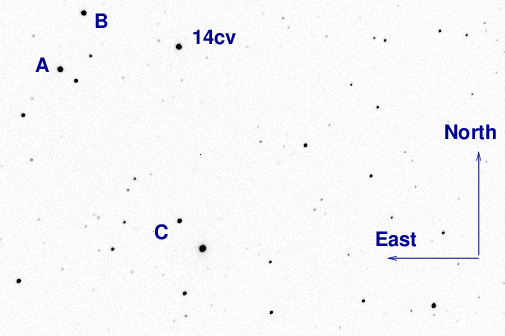
Some of the reference stars marked above have magnitudes in the UCAC4. Specifically, star "A" above is
The television camera on the finder scope shows the following when we're pointed at ASAS-14cv. North up, East left, field about 1 degree on a side.
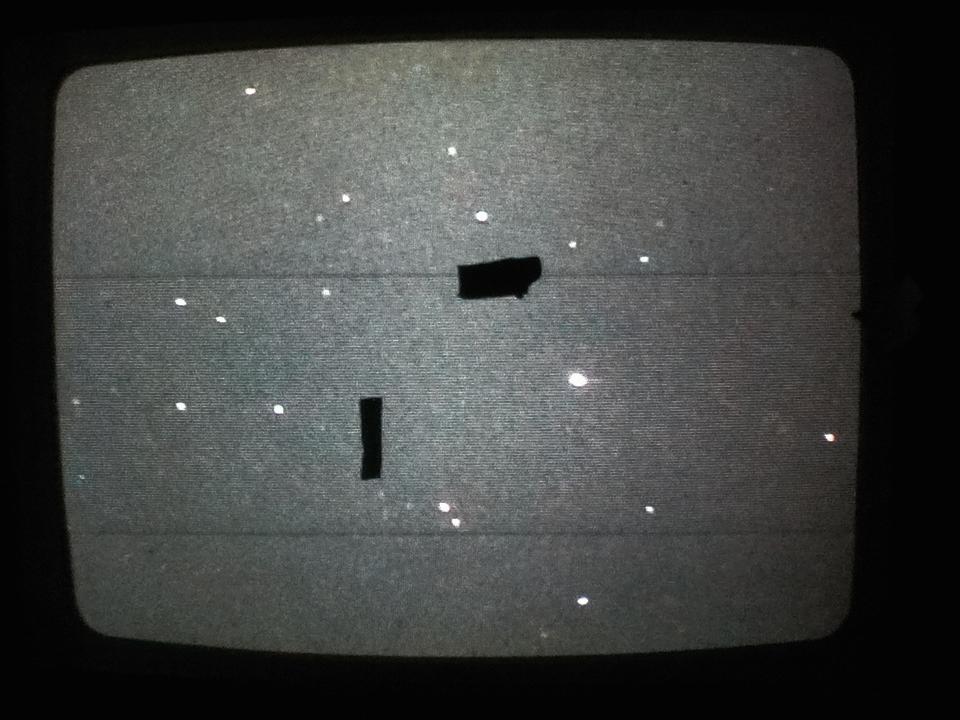
Image adjustment factors show no big features - good.
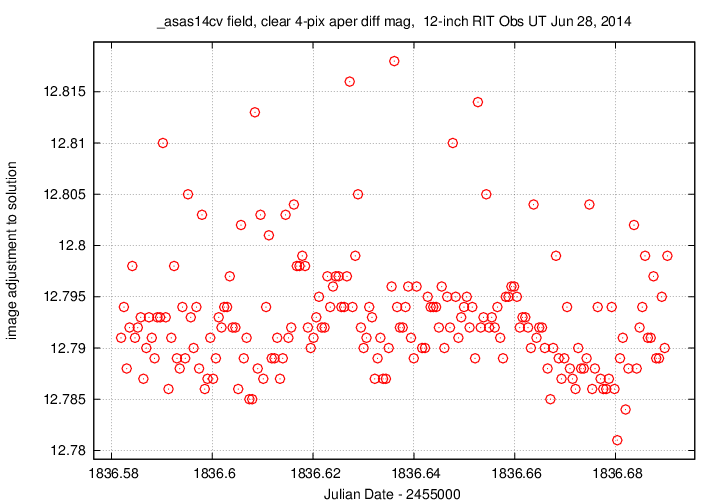
Using aperture photometry with a radius of 4 pixels (radius of 7.4 arcsec), I measured the instrumental magnitudes of a number of reference stars and the target. Following the procedures outlined by Kent Honeycutt's article on inhomogeneous ensemble photometry, I used all stars available in each image to define a reference frame, and measured each star against this frame. I used the UCAC4 V-band magnitude of star "A" to convert the ensemble instrumental magnitudes to a reported "V"-band magnitude (but remember, it's a clear filter).
Sigma-vs-mag plot:
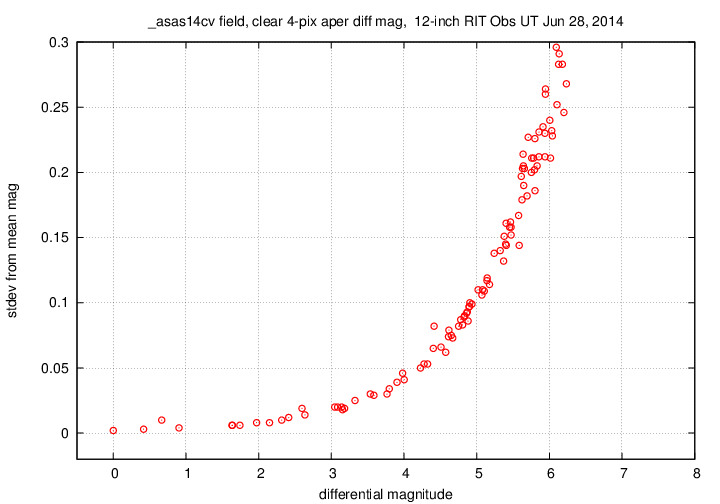
The target had a "V"-band magnitude of roughly 12.2, a decrease of about 0.2 mag since 1 night ago.
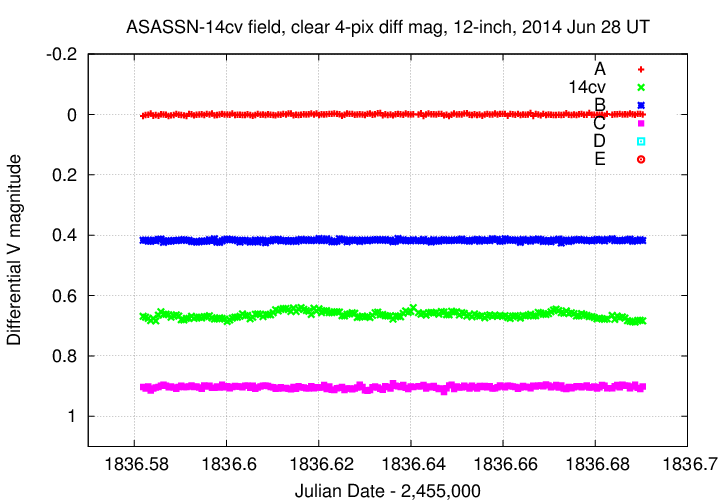

You can see my measurements of the star in the ASCII text file below. The first few lines are shown here:
# Measurements of ASAS_SN14cv made at RIT Obs, Jun 28, 2014 UT, # in good conditions, # by Michael Richmond, using 12-inch Meade and SBIG ST-8E CCD. # Exposures 30 seconds long, no filter. # Tabulated times are midexposure (FITS header time - half exposure length) # and accurate only to +/- 1 second (??). # 'mag' is a differential magnitude based on ensemble photometry # using a circular aperture of radius 7.4 arcseconds. # which has been shifted so UCAC4 711-058151 has mag=11.518 # which is its V-band mag according to UCAC4. # # UT_day JD HJD mag uncert Jun28.08190 2456836.58190 2456836.58332 12.187 0.004 Jun28.08245 2456836.58245 2456836.58387 12.190 0.004 Jun28.08301 2456836.58301 2456836.58443 12.194 0.004
Here's a chart of the field of ASAS-SN14cl, which is at
RA = 21:54:57.62 Dec = +26:41:16 (J2000)

Some of the reference stars marked above have magnitudes the UCAC4 AAVSO chart 13493SS. Specifically, star "B" above is
The television camera on the finder scope shows the following when we're pointed at ASAS-14cl. North up, East left, field about 1 degree on a side.
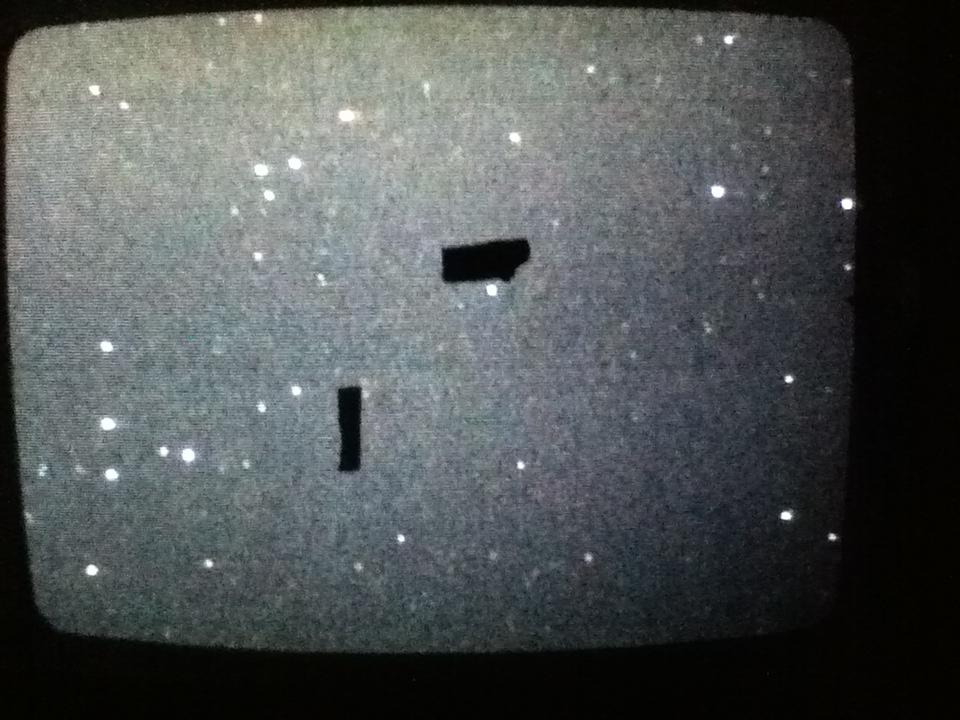
Conditions were good until the last hour, when (I am guessing) clouds passed through; I didn't see any visually, but the image adjustment factor jumps.

Using aperture photometry with a radius of 4 pixels (radius of 7.4 arcsec), I measured the instrumental magnitudes of a number of reference stars and the target. Following the procedures outlined by Kent Honeycutt's article on inhomogeneous ensemble photometry, I used all stars available in each image to define a reference frame, and measured each star against this frame. I used the AAVSO V-band magnitude of star "B" to convert the ensemble instrumental magnitudes to a reported "V"-band magnitude (but remember, it's a clear filter).
The target is the bright star with larger scatter than its peers.
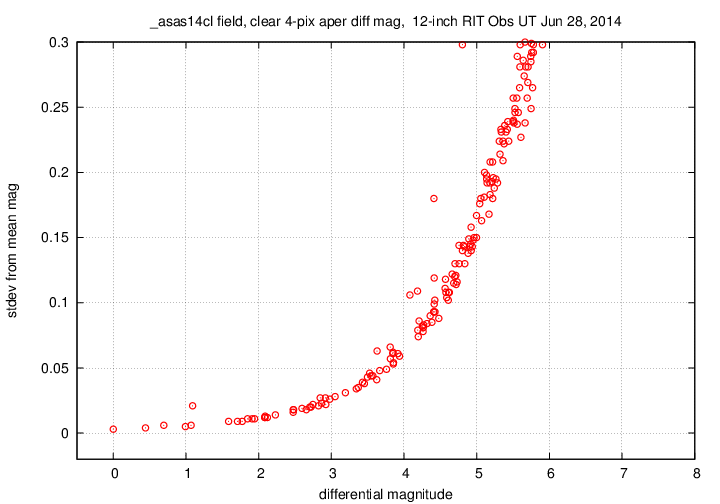
The target had a "V"-band magnitude of roughly 13.0, about 0.2 mag dimmer than last night.
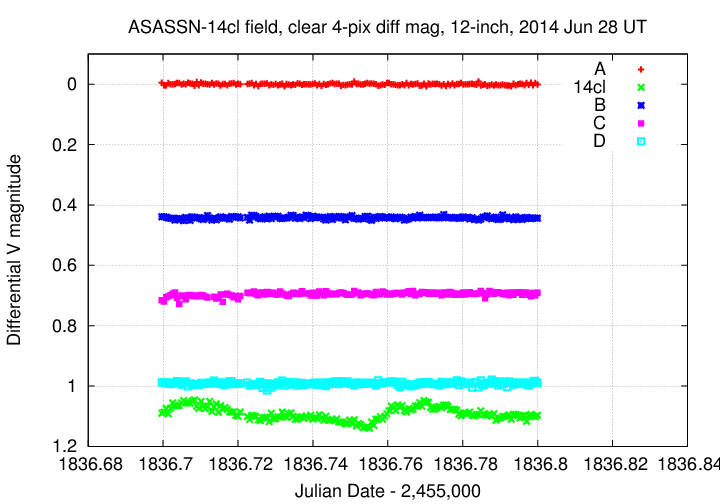
Grab the text file below for all the RIT measurements of ASAS-SN14cl. The header of the file is shown below.
# Measurements of ASAS_SN14cl made at RIT Obs, Jun 28, 2014 UT, # in fair conditions, # by Michael Richmond, using 12-inch Meade and SBIG ST-8E CCD. # Exposures 30 seconds long, no filter. # Tabulated times are midexposure (FITS header time - half exposure length) # and accurate only to +/- 1 second (??). # 'mag' is a differential magnitude based on ensemble photometry # using a circular aperture of radius 7.4 arcseconds. # which has been shifted so UCAC4 584-123918 has mag=12.335 # which is its V-band mag according to AAVSO chart 13493SS. # # UT_day JD HJD mag uncert Jun28.19964 2456836.69964 2456836.70157 12.983 0.006 Jun28.20023 2456836.70023 2456836.70216 12.979 0.006 Jun28.20081 2456836.70081 2456836.70274 12.967 0.006
Last modified 6/29/2014 by MWR.